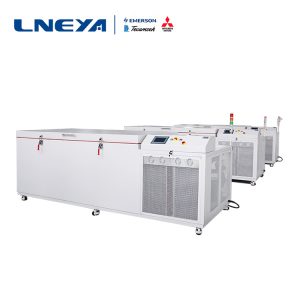Closed cycle heating system temperature deviation description
If the temperature deviation occurs in the closed cycle heating system during use, it is necessary to check to see if there is any problem in each link, and solve the problem in time.
In the steady state, the closed loop heating system displays the difference between the average value of the temperature and the average measured temperature at the center point of the workspace. (Note: The average display temperature here refers to the average display temperature of the temperature control instrument of the device). In the closed state of the closed circulation heating system (chamber), the measurement points of the working space are measured for the upper and lower deviations of the high temperature and the MIN temperature from the nominal temperature within a prescribed time. The object of the closed cycle heating system is that the temperature control instrument of the device displays the average temperature and evaluates the deviation from the reference point. Obviously, this has nothing to do with temperature uniformity. The closed-loop heating system temperature deviation index is easy to implement because it only evaluates the temperature average of the equipment temperature control meter.
LNEYA closed-loop heating system is dynamic constant temperature control of cold and heat source in high pressure reactor, dynamic constant temperature control of double-layer glass reactor cold and heat source, dynamic constant temperature control of double-layer reactor cold and heat source, and constant temperature of microchannel reactor Control; small thermostatic control system, temperature control of steaming system, low temperature and high temperature aging test of materials, combined chemical source cold source heat source constant temperature control, semiconductor equipment cooling and heating, vacuum chamber cooling and heating constant temperature control. The closed-loop heating system adopts a fully closed pipeline design and uses a high-efficiency plate heat exchanger to reduce the demand for thermal fluid while improving the heat utilization rate of the system and achieving rapid rise and fall temperatures. The heat-conducting medium is in a closed system with an expansion vessel. The heat-conducting medium in the expansion vessel does not participate in the circulation. Whether it is high temperature or low temperature, the temperature of the expansion tank is normal temperature to 60 degrees, which can reduce the absorption and evaporation of the heat-conducting medium during operation. risk.
The temperature deviation of the closed loop heating system is related to its temperature accuracy. The temperature accuracy of different closed loop heating systems is related to the performance of the system. Therefore, users should know how to understand the closed loop heating system at the beginning. Temperature control accuracy. (This article is from the source network, if there is any infringement, please contact LNEYA to delete, thank you.)
관련 권장 사항
-
-
Thermal Oil System for Reactors in chemical/industrial laboratory
1050A thermal oil system for a reactor is a heat transfer system designed to provide precise and controlled heating or cooling to a chemical or industrial reactor. This system uses a heat transfer fluid, typically a high-temperature minera...
세부 정보 보기 -
최소 40도 냉장고 사용 시 주의사항
117340도 이하 냉장고의 온도는 실내 온도입니다: 5-32 °C, 상대 습도 80%/22 °C, 지상과의 거리> 10cm, 고도 2000m 이하, 안전한 환경은 낮은 40 도의 원활한 작동을 보장합니다 ...
세부 정보 보기 -
초저온 냉동고에서 오일을 반환하는 문제를 해결하는 방법은 무엇입니까?
1539초저온 냉동고는 장기간 사용 후 고장이 발생하며 오일 반환이 발생할 때 사용자의 특별한주의가 필요합니다. 초저온 냉동고에서는 오일 리턴이 원활하지 않아 많은 양의 윤활유를 유발할 수 있습니다.
세부 정보 보기
 LNEYA 산업용 냉각기 제조업체 공급 업체
LNEYA 산업용 냉각기 제조업체 공급 업체












